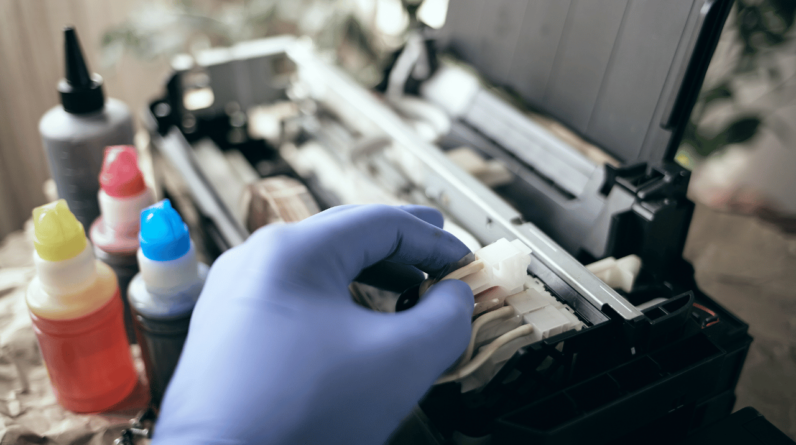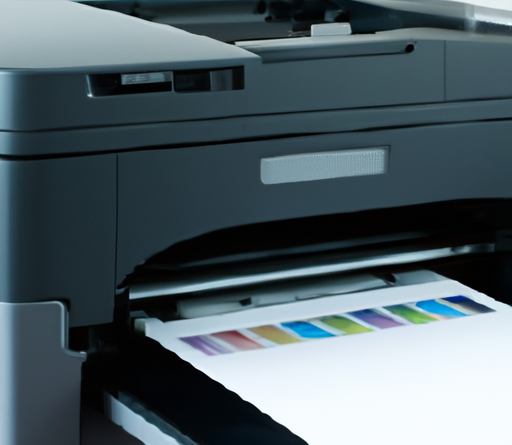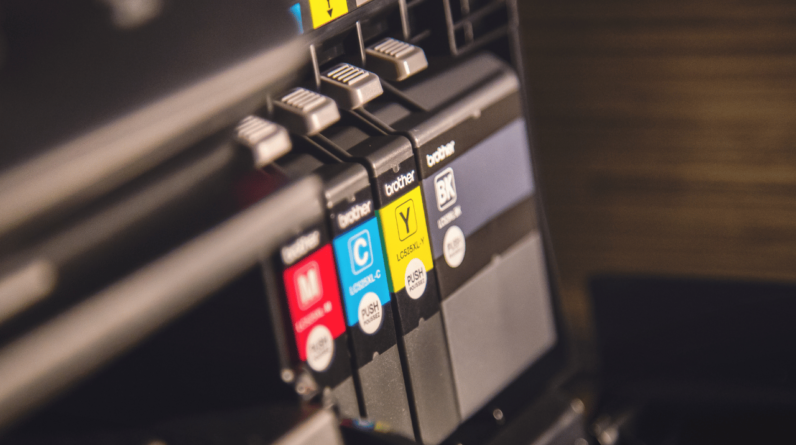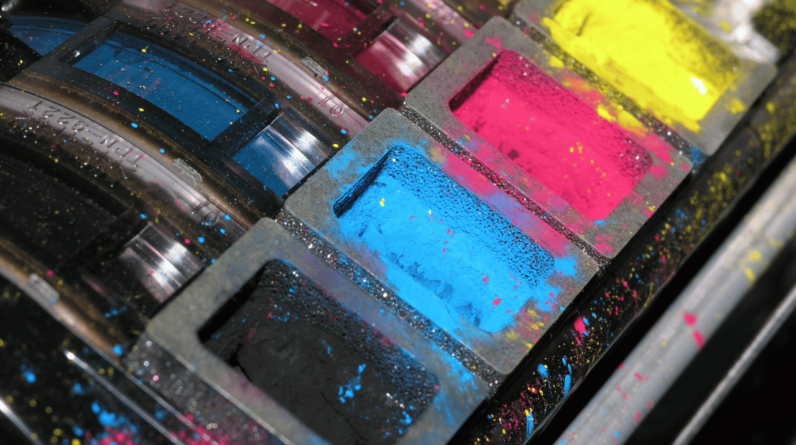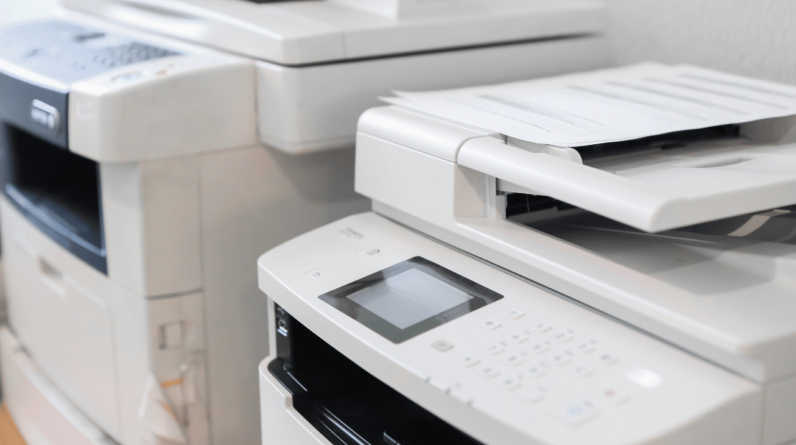
Disclaimer: This post may contain affiliate links. As an Amazon Associate, we earn from qualifying purchases.
Whether you rely on your printer for personal use or it’s an essential tool for your business, keeping it in top working condition is crucial. To ensure your printer continues to produce high-quality prints and operates smoothly, it’s important to implement effective maintenance practices.
In this post, you will discover a range of practical tips and techniques to effectively maintain your printer, prolong its lifespan, and avoid common issues that can disrupt your printing tasks. By following these easy-to-implement strategies, you can keep your printer running smoothly and enjoy consistent, professional-quality prints for years to come.
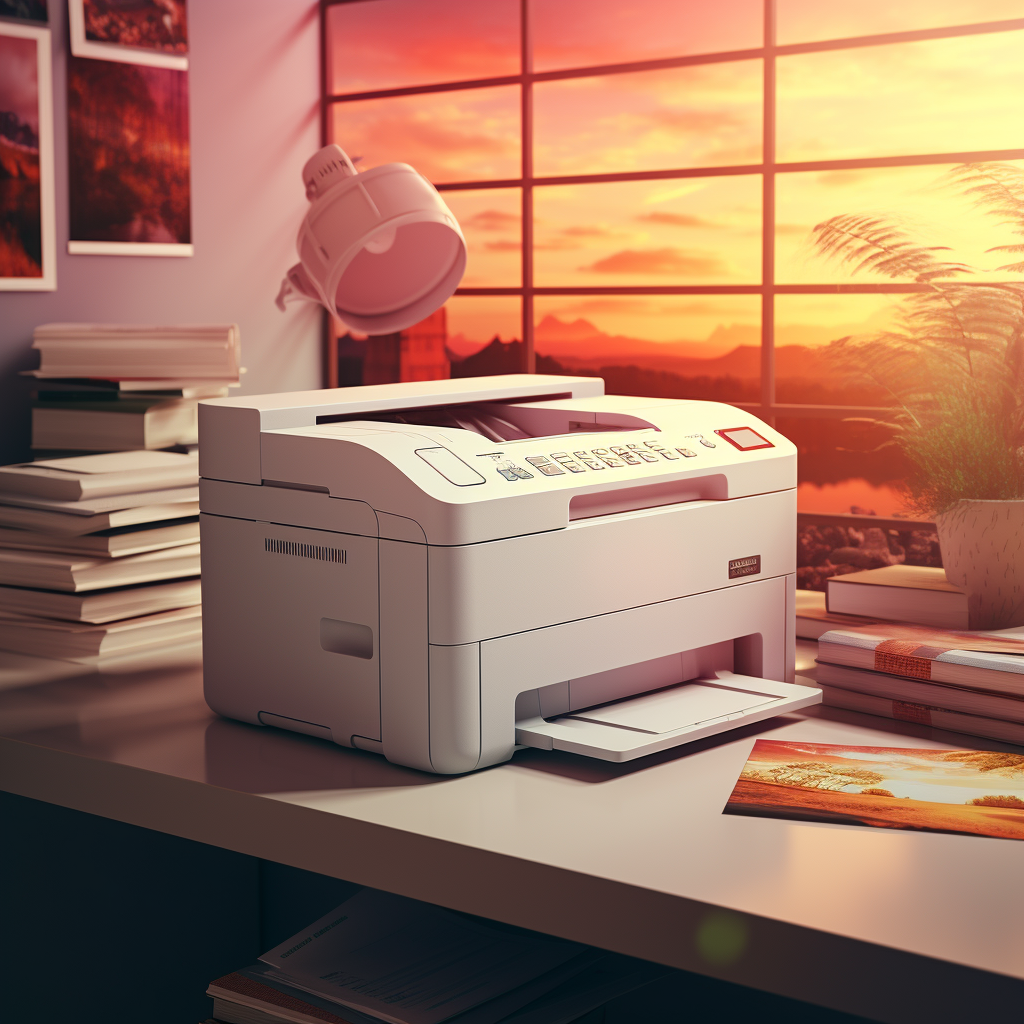
Regular Cleaning
Clean the exterior
Regularly cleaning the exterior of your printer is essential for maintaining its appearance and functionality. Use a soft, lint-free cloth to wipe down the surfaces of the printer, removing any dust or debris. Make sure to pay attention to areas such as the control panel, input and output trays, and the sides of the printer. Avoid using harsh chemicals or abrasive materials that could damage the printer’s finish.
Clean the interior
In addition to the exterior, it’s important to clean the interior of your printer regularly. Start by turning off the printer and unplugging it from the power source. Gently open the printer access doors and use a can of compressed air to remove any dust or paper particles that may have accumulated inside.
Be careful not to touch any internal components, as this could cause damage.
Clean the print head
The print head is a crucial component of your printer that requires regular cleaning to ensure optimal print quality. Consult your printer’s manual for specific instructions on how to access and clean the print head. In general, you can use a soft, lint-free cloth lightly dampened with water or a recommended cleaning solution to gently wipe the print head. Avoid using any excessive force or abrasive materials that could damage the delicate components.
Clean the paper feed rollers
The paper feed rollers are responsible for pulling the paper into the printer. Over time, these rollers can become dirty or worn out, leading to paper jams or feeding issues. Cleaning the paper feed rollers is relatively easy and can be done by gently wiping them with a damp cloth. Be sure to consult your printer’s manual for specific instructions on how to access and clean the paper feed rollers properly.
Proper Use of Paper
Use the correct type of paper
Using the correct type of paper for your printer is crucial in preventing paper jams, print quality issues, and even damage to the printer itself. Refer to your printer’s manual for guidance on the recommended paper types and sizes. Avoid using paper that is too thin or too thick for your printer, as this can cause feeding problems.
Additionally, ensure that the paper is free from any damage or wrinkles before loading it into the printer.
Store paper properly
Proper storage of paper can prevent issues such as moisture absorption, curling, and damage to the print quality. It’s best to store paper in a cool, dry place, away from direct sunlight, extreme temperatures, and humidity. Keep the paper in its original packaging until you’re ready to use it to protect it from exposure to air and moisture.
If you need to remove the paper from its packaging, place it in a resealable bag or airtight container to minimize exposure to the elements.
Remove any jammed paper
Paper jams can occur for various reasons, such as using improper paper sizes, loading too much paper at once, or debris obstructing the paper path. If you encounter a paper jam, it’s important to follow the proper procedure for removing the jammed paper.
Always refer to your printer’s manual for specific instructions, as each printer model may have slightly different procedures. Remember to turn off the printer and unplug it from the power source before attempting to clear any paper jams.
Use the paper tray correctly
Loading paper into the printer’s paper tray may seem like a simple task, but it’s essential to do it correctly to avoid feeding issues. Make sure to adjust the paper guides in the tray to match the width of the paper being used. Avoid overloading the paper tray, as this can lead to paper jams and other problems.
Finally, before printing, double-check that the paper is properly aligned and secured in the tray.
Regular Ink Cartridge Checks
Inspect the ink levels
Regularly checking the ink levels of your printer cartridges is crucial for avoiding unexpected interruptions while printing. Most printers have a built-in ink level monitoring system that allows you to check the ink levels from your computer or through the printer’s control panel.
By monitoring the ink levels, you can determine when it’s time to replace cartridges or when they need to be refilled.
Replace empty or low ink cartridges
When the ink levels of your printer cartridges are low or empty, it’s important to replace them promptly. Using empty cartridges or cartridges with very low ink levels can lead to poor print quality, clogged printheads, and even damage to the printer. Follow the instructions provided by your printer manufacturer to safely remove and replace the ink cartridges.
Make sure to choose genuine cartridges or high-quality compatible cartridges that are compatible with your printer model.
Clean the ink cartridges
Over time, ink cartridges can become clogged or have dried ink residue that can affect print quality. Cleaning the ink cartridges can help restore their performance and prevent clogs. Consult your printer’s manual for specific instructions on how to clean the ink cartridges.
In general, you can use a lint-free cloth lightly dampened with water or a recommended cleaning solution to gently wipe the printhead and the ink nozzles. Avoid touching the copper contacts on the cartridges, as this can cause electrical issues.
Align the ink cartridges
Proper alignment of the ink cartridges is essential for achieving optimal print quality. Most printers have an automatic alignment feature that can be accessed through the printer’s software or control panel. Follow the on-screen instructions to align the ink cartridges correctly.
If you notice any alignment issues or inconsistent print quality even after alignment, consider contacting the printer manufacturer for further assistance.
Updating Printer Drivers
Check for driver updates
Printer drivers are essential software that enables your computer to communicate with the printer and control its functions. It’s important to regularly check for driver updates to ensure compatibility, performance improvements, and bug fixes. Visit the printer manufacturer’s website or use the manufacturer’s software to check for available driver updates.
Download and install updated drivers
Once you have identified any available driver updates, download them from the printer manufacturer’s website or through the manufacturer’s software. Follow the installation instructions provided with the driver update to ensure a smooth installation process. In some cases, you may need to restart your computer for the changes to take effect.
Troubleshoot driver issues
If you encounter any issues during the driver update process or experience compatibility problems after updating, it’s important to troubleshoot the driver issues. Start by thoroughly reading the troubleshooting guide provided by the printer manufacturer.
You can also visit the manufacturer’s support website or contact their customer support for further assistance. In some cases, rolling back to a previous driver version or performing a clean installation of the drivers may resolve the issues.
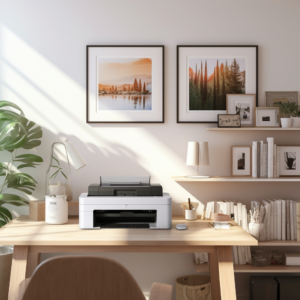
Regular Software Updates
Check for firmware updates
Firmware is the software embedded in your printer’s hardware that controls its operation and functionality. Regularly checking for firmware updates is crucial for ensuring optimal performance, compatibility with new software or operating systems, and resolving known issues.
Visit the printer manufacturer’s website or use their software to check for any available firmware updates for your printer model.
Download and install firmware updates
If there are firmware updates available for your printer, download them from the manufacturer’s website or through their software. Carefully follow the instructions provided with the firmware update to install it correctly. It’s essential not to interrupt the firmware update process, as this can potentially damage the printer.
Ensure that your printer’s power source is stable and uninterrupted during the firmware update.
Resolve compatibility issues
In some cases, after updating the printer firmware or the software on your computer, you may encounter compatibility issues that affect the printer’s performance or functionality. If you experience any compatibility issues, it’s important to troubleshoot and resolve them promptly.
Start by checking the printer and computer system requirements for compatibility. If compatibility issues persist, visit the printer manufacturer’s support website or contact their customer support for further assistance.
Avoiding Overheating
Give the printer breaks
Printers, especially those used for high-volume printing or long periods, can generate a significant amount of heat. To avoid overheating, it’s important to give your printer periodic breaks.
If you have a large print job or continuous printing tasks, consider breaking them into smaller batches and allowing the printer to rest for a few minutes between batches. This will help prevent excessive heat buildup and extend the lifespan of your printer.
Ensure proper ventilation
Proper ventilation is crucial for preventing overheating in printers. Make sure your printer is placed in a well-ventilated area with sufficient airflow around it. Avoid placing your printer in enclosed spaces or near heat sources such as radiators or direct sunlight, as this can increase the risk of overheating.
If you notice that your printer becomes hot to the touch or emits unusual odors, it may be a sign of overheating, and you should immediately turn it off and let it cool down.
Clean or replace cooling fans
Most printers have built-in cooling fans that help regulate the temperature. Over time, these fans can become dirty or worn out, affecting their effectiveness. Regularly clean the cooling fans using compressed air or a soft brush to remove any dust or debris that may have accumulated.
If the fan is damaged, noisy, or not functioning properly, consider replacing it to ensure proper cooling and prevent overheating.
Monitor temperature levels
Some printers provide temperature monitoring features that allow you to check the internal temperature of the printer. Familiarize yourself with these features and use them regularly to monitor the temperature levels.
If you notice any significant increases in temperature or if the printer consistently operates at high temperatures, it may be a sign of a cooling system issue. In such cases, it’s important to seek professional assistance to diagnose and resolve the problem.

This image is property of images.unsplash.com.
Managing Print Queues
Delete print jobs
Print queues can sometimes get clogged with old or unfinished print jobs, causing delays and other issues. Regularly check the print queue and delete any unnecessary or stuck print jobs. This can help free up system resources, improve printing performance, and prevent conflicts between jobs.
To access the print queue, go to the printer settings on your computer or use the printer’s control panel.
Prioritize print jobs
If you have multiple print jobs in the queue, it’s helpful to prioritize them to ensure that urgent or time-sensitive documents are printed first. Many printers allow you to rearrange the order of print jobs in the queue, allowing you to prioritize important documents.
Refer to your printer’s manual or consult the printer settings on your computer for instructions on how to prioritize print jobs.
Restart print spooler service
Sometimes, the print spooler service, responsible for managing the print jobs, can encounter issues that affect the printing process. If you notice that print jobs are not being processed or are stuck in the queue, restarting the print spooler service can help resolve the issue.
To restart the print spooler service, go to the Services menu on your computer, locate the Print Spooler service, and click on Restart. This will refresh the print spooler and allow it to resume normal operation.
Using High-Quality Ink
Purchase genuine ink cartridges
When it comes to ink cartridges, it’s crucial to use high-quality products that are recommended by the printer manufacturer. Genuine ink cartridges are specifically designed for your printer model and ensure reliable performance and high-quality prints.
Avoid using counterfeit or low-quality ink cartridges, as they can lead to poor print quality, clogged printheads, and potential damage to the printer.
Avoid using expired ink
Ink cartridges have an expiry date, and using expired ink can lead to performance issues and poor print quality. Always check the expiration date on the ink cartridges before use, and avoid using cartridges that have expired.
Expired ink cartridges may have dried ink or deteriorated components, which can negatively impact the print quality and potentially damage the printer.
Store ink cartridges properly
Proper storage of ink cartridges is essential for maintaining their quality and performance. If you have spare ink cartridges or need to store unused cartridges, ensure they are stored in a cool, dry place away from direct sunlight, extreme temperatures, and humidity.
It’s best to store ink cartridges in their original packaging or airtight containers to protect them from exposure to air and moisture. Be mindful of the storage conditions and the expiration dates when stocking up on ink cartridges.
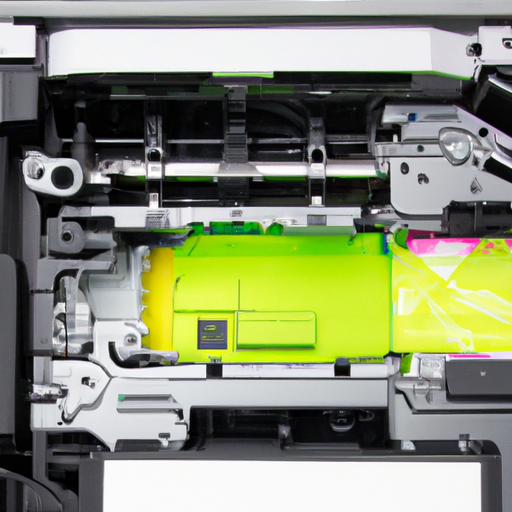
Regular Maintenance Kits
Replace maintenance kits periodically
Maintenance kits are bundles of essential components and consumables that need to be replaced periodically to ensure proper printer function. Consult your printer’s manual or the manufacturer’s website to determine the recommended maintenance kit replacement schedule for your specific printer model.
By replacing maintenance kits regularly, you can prevent issues such as paper jams, poor print quality, and mechanical failures.
Clean and lubricate moving parts
Regular cleaning and lubrication of the printer’s moving parts are essential for smooth operation and longevity. Consult your printer’s manual for specific instructions on how to clean and lubricate the moving parts.
Typically, you can use a lint-free cloth and a manufacturer-recommended lubricant to clean and lubricate components such as paper trays, rollers, and gears. Proper lubrication reduces friction and wear, preventing mechanical issues and extending the lifespan of your printer.
Inspect and replace worn-out components
Periodically inspecting your printer for worn-out or damaged components is important for maintaining its performance and preventing major failures. Check components such as paper feed rollers, belts, and fuser assemblies for signs of wear or damage.
If you notice any worn-out or damaged parts, consult your printer’s manual or contact the manufacturer’s customer support to determine the appropriate replacement parts and procedures.
Professional Printer Servicing
Schedule regular professional servicing
While regular maintenance and care can significantly prolong the life of your printer, there may be times when professional servicing is necessary. Schedule regular professional servicing to have your printer inspected, cleaned, and calibrated by trained technicians.
They can identify potential issues, perform necessary repairs or adjustments, and provide expert advice on optimizing your printer’s performance.
Check warranty coverage
Before seeking professional printer servicing, check the warranty coverage of your printer. Most printers come with a manufacturer’s warranty that covers certain repairs and replacements within a specific time frame. Review the terms and conditions of your warranty to determine if the required servicing is covered.
If your printer is still under warranty, contact the manufacturer or an authorized service center to arrange for repairs or maintenance.
Seek assistance for complex issues
If you encounter complex issues with your printer or if you’re unsure about the appropriate troubleshooting steps, it’s best to seek professional assistance. Printer technicians are trained to diagnose and resolve complex issues, ensuring the proper functioning of your printer.
Trying to fix complicated problems on your own may result in further damage or voiding the warranty. Contact the manufacturer’s customer support or an authorized service center for technical assistance and guidance.
Taking care of your printer through regular cleaning, proper use of paper, ink cartridge checks, driver and software updates, and preventive maintenance can significantly extend its lifespan and ensure optimal performance.
By following these tips and incorporating them into your regular printer maintenance routine, you can avoid costly repairs, minimize downtime, and enjoy high-quality prints for years to come.

